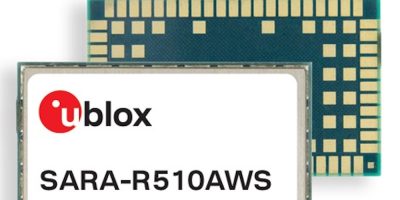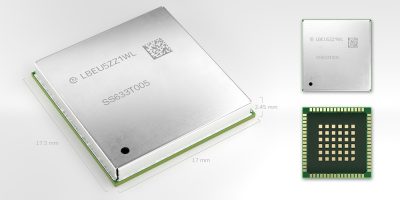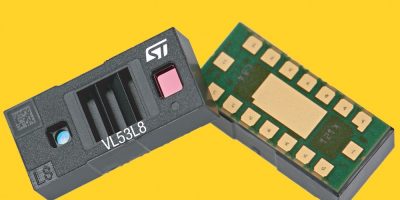A variant of the SARA-R5 LTE-M cellular module series has been introduced by u-blox to make it easier, cheaper and quicker to develop secure IoT networks with AWS (Amazon Web Services).
The SARA-R510AWS module serves a variety of applications that require reliable and secure cloud connectivity, for example asset tracking, smart farming, sensor monitoring and connected medical equipment.
Building and commercialising secure and scalable cloud-connected IoT networks that are easy to maintain over their lifetime can be challenging, said u-blox, explaining the introduction of the AWS module. In addition to requiring expertise in embedded development, networking, cryptography and cloud architecture, developers need to be proficient in handling a complex software stack. The SARA-R510AWS module offers product developers a straightforward path to secure and scalable AWS cloud services, said u-blox. This considerably reduces product development time and effort and cuts time to market. Using a stripped-down command interface, the module can connect to the AWS cloud using just two dedicated AT commands.
The SARA-R510AWS runs validated AWS IoT ExpressLink firmware which handles steps such as networking, authentication, and secure data transfer. There are also security features, including a pre-provisioned hardware-based root of trust, secure boot, and secure storage, as well as encrypted communication to and from the cloud, enabling secure over the air updates of the host processor and the module’s communication firmware.
u-blox will exhibit the SARA-R510AWS at Embedded World in Nuremberg, Germany from 21 to 23 June 2022, on the AWS stand in Hall 4-548.
u-blox specialises in positioning and wireless communication in automotive, industrial and consumer markets. Its services and products let people, vehicles, and machines determine their precise position and communicate wirelessly over cellular and short range networks. The company has a broad portfolio of chips, modules, and secure data services and connectivity.
The company has headquarters in Thalwil, Switzerland and offices in Europe, Asia, and the USA.







